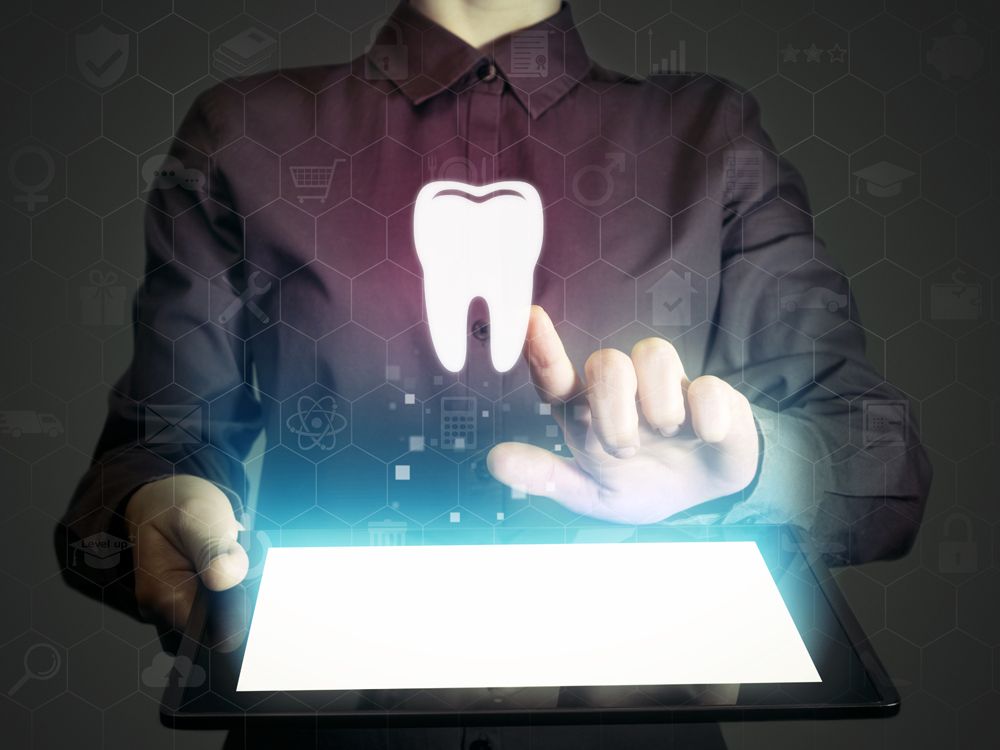Digitizing the Dental Patient Experience
Digitizing the dental patient experience is vital to push practices forward and stay on top in the industry.
Digitizing the Dental Patient Experience. Photo courtesy of svetazi / stock.adobe.com.

Digital transformation is happening everywhere, and health care is no different. The healthcare sector invested a record $9.4 billion in digital health last year, while health tech innovators are developing new products and services – and receiving significant funding – at an astonishing rate.1
Now, it’s time for the dental practices to join the transformation.
The dental industry is known for its growth and innovation, but when it comes to investing in digital solutions, they are often slower to adapt than their health care counterparts.
However, rapid consolidation, consumer-centric retail movements, and a post-pandemic operational environment make it imperative that dental practices enhance their digital offerings. In doing so, dental practices can redefine the patient experience, allowing them to thrive with a new generation of dental consumers. There are a variety of reasons why a practice should digitize its patient experience. Here are just a few:
Patient Engagement
Patient engagement is a top priority across the healthcare sector. One survey found that 52 percent of chief information officers identify patient engagement technology as a top priority in 2021.2
For dental practices, improving patient engagement through digital platforms can produce a compelling dental experience that keeps consumers connected to a practice. Digital platforms allow patients to schedule their own appointments, view past and present treatment details, and engage in a social, less formal dynamic.
Pricing Transparency
A groundbreaking new federal law has made healthcare price transparency more tangible than ever before. As a result, hospitals must post the prices negotiated with private insurers, and the disparities can be breathtaking. According to The New York Times, the data “shows hospitals are charging patients wildly different amounts for the same basic services.” 3
Many consumers, already furious with the high cost of healthcare, will demand new and better models moving forward. Dental practices can meet consumer demand by increasing price transparency and shifting payment models to accommodate a community-based approach to healthcare.
Digitalization will be central to these efforts, providing the data-driven insights that enable dental providers to offer competitive, transparent pricing on everything from routine cleanings to major procedures.
Revenue Management
As many as twelve million Americans lost their employer-sponsored health insurance during the recent pandemic, resulting in a significant drop in dental appointments and diminishing revenue potential for dental providers.
This clarifies the preexisting and urgent need for dental practices to develop alternative revenue streams to support existing preferred provider organization (PPO) reimbursement models.
A subscription model powered by a cadre of tech startups will change this dynamic, allowing dental practices to sell directly to consumers with clear service outlines and cost transparency. Subscription models increase the percentage of revenue dental practices receive while fostering more direct relationships between dentists and consumers. For those without employer-sponsored insurance, including a growing cohort of gig and contract workers, a subscription model provides what was once unattainable access to dental services. Dental practices will undoubtedly benefit as subscription models forever change the financial relationship between providers and consumers.
Personalized Experiences
People want to be a part of a community, and new digital tools are making it possible for dental practices to provide that experience for their patients. For example, member dashboards that give dental consumers easy access to their information empower patients to develop a more personalized connection to their dental practice and the services it provides.
In addition, features like recurring billing and push notifications reduce strain on patients by providing regular payment or patient experience information when they need it most.
Service Accessibility
The recent pandemic normalized telehealth services, allowing more people to have meaningful facetime with their healthcare providers than ever before. McKinsey & Company estimates that these services will become a quarter-trillion revenue source for healthcare providers ready to embrace this methodology.4
The American TeleDentistry Association estimates that 20 percent of Americans live in rural areas without easy access to dental services.5 Teledentistry services allow practices to reach these consumers while also enhancing potential services to localized consumers looking for a more accessible approach.
When coupled with subscription model payment plans, dental practices can accommodate wide-ranging patient needs, preferences, and expectations, allowing them to drive revenues and consumer engagement at a critical time.
Conclusion
The recent pandemic rapidly accelerated digitalization, providing dental practices with an opportunity to improve their patient offerings to meet today’s unique needs and tomorrow’s unprecedented opportunities.
References
Reuter E. Health-tech funding breaks another record in 2020. MedCity News. Published January 7, 2021. Accessed September 28, 2021. https://medcitynews.com/2021/01/health-tech-funding-breaks-another-record-in-2020/.
Heath S. 52% of Cios Say patient ENGAGEMENT Technology top priority in 2021. PatientEngagementHIT. Published May 19, 2021. Accessed September 28, 2021. https://patientengagementhit.com/news/52-of-cios-say-patient-engagement-technology-top-priority-in-2021.
Kliff S. How to look up prices at your hospital, if they exist. The New York Times. Published August 22, 2021. Accessed September 28, 2021. https://www.nytimes.com/2021/08/22/upshot/health-care-prices-lookup.html.
McKinsey & Company. Accessed September 28, 2021. https://www.mckinsey.com/.
Teledentistry facts. American Teledentistry Association. Published March 19, 2020. Accessed September 28, 2021. https://www.americanteledentistry.org/facts-about-teledentistry/.